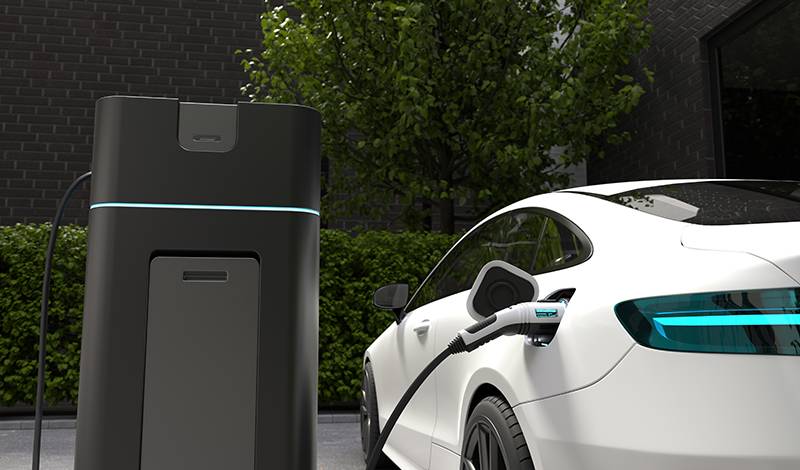A full hybrid vehicle, also known as a hybrid electric vehicle, is an innovative car that combines the power of an internal combustion engine with one or more electric motors. This combination allows the car to operate on electric power alone, gasoline power alone, or a combination of both, providing enhanced fuel efficiency and reduced emissions.
They are also commonly known as parallel hybrids. The term ‘parallel’ refers to the fact that the engine and the powerful electric motor alone can propel the vehicle, separately or together.
Key Takeaways:
- Full hybrid vehicles combine the power of a combustion engine with an electric motor, allowing them to operate on electric power alone, gasoline power alone, or a combination of both.
- They are commonly known as parallel hybrids because the engine and the electric motor can independently propel the vehicle, separately or together.
- Full hybrids use regenerative braking to capture the energy and store it in the battery pack, saving fuel and reducing wear on the braking system.
- Components of a full hybrid vehicle include the internal combustion engine, electric motor, battery pack, and powertrain control unit.
- Advantages of full hybrid vehicles include reduced fuel cost, reduced emissions, regenerative braking, versatility, and potential government incentives.
- Disadvantages include higher upfront costs, specialised maintenance, added weight and complexity, slightly reduced power output, and potential battery replacement costs.
How Does a Full Hybrid Vehicle Work?
The internal combustion engine and electric motor work together or independently in a full hybrid system, depending on driving conditions. The electric motor assists the engine during acceleration, providing smooth and efficient power delivery.
When the vehicle is stationary or moving at low speeds, the engine can shut off completely, relying solely on the electric motor. This feature is handy in congested city traffic, reducing fuel consumption and emissions.
Additionally, full hybrid vehicles utilise regenerative braking, which captures energy typically lost during braking and stores it in the battery pack. This saves fuel and reduces wear on the conventional braking system.
Components of a Full Hybrid Vehicle:
- Internal Combustion Engine (ICE): The heart of a full hybrid car, the internal combustion engine, can be powered by either petrol or diesel. It works with the electric motor to ensure optimal performance and efficiency.
- Electric Motor: The electric motor is another crucial component that provides additional propulsion to the hybrid vehicle. It can be driven exclusively by electric power or with the combustion engine to deliver power to the wheels.
- Battery Pack: The battery pack stores electrical energy required to power the electric motor. Full hybrids often have larger batteries than mild ones, enabling them to travel longer distances on electric power alone. The batteries can be charged through regenerative braking, where energy is captured during braking and deceleration, or by plugging into an external power source.
- Powertrain Control Unit: The powertrain control unit serves as the brain of the full hybrid system. It monitors parameters such as vehicle speed, throttle input, and battery charge level, optimising power allocation between the engine and electric motor for maximum efficiency.
Advantages of Full Hybrid Vehicles:
- Improved Fuel Economy: Full hybrid vehicles offer better fuel economy compared to traditional petrol or diesel cars. Switching between electric and combustion power optimises fuel usage, resulting in fuel cost savings at the pump.
- Reduced Emissions: Full hybrids emit fewer greenhouse gases and pollutants than conventional vehicles, creating a cleaner and greener environment.
- Regenerative Braking: Full hybrids harness the power of regenerative braking to recover and store energy typically wasted in regular vehicles. This feature not only enhances fuel economy but also extends the lifespan of the braking system.
- Versatility and Convenience: Full hybrids provide the flexibility to operate on electric power alone, making them ideal for short distances or congested urban areas. They can also switch seamlessly to the combustion engine for longer journeys, eliminating range anxiety associated with fully electric cars.
- Government Incentives: Many governments worldwide offer incentives and tax credits for hybrid vehicle owners, reducing the overall cost of ownership.
Disadvantages of Full Hybrid Vehicles:
- Higher Upfront Cost: Full hybrid vehicles generally costs more than mild hybrids. However, the cost difference gradually diminishes as hybrid technology becomes more mainstream.
- Higher Maintenance Costs: Hybrid vehicles may require specialised maintenance, and in some cases, the replacement cost of hybrid batteries can be higher than a standard car battery.
- Added Weight and Complexity: Full hybrids tend to be heavier and more complex than traditional vehicles due to the integration of multiple power sources. This added weight can affect handling and performance to some extent.
- Reduced Power Output: Full hybrids may have slightly lower horsepower than their conventional counterparts, which can impact acceleration and top speed.
- Battery Replacement: If the hybrid battery needs to be replaced, it can be an expensive component, although advancements in technology are gradually reducing these costs.
Conclusion: Embracing a Sustainable Future
Full hybrid vehicles represent an essential step towards a sustainable transportation future. Their ability to seamlessly alternate between electric and combustion power offers improved fuel economy, reduced emissions, and versatility for different driving conditions. Despite their higher upfront costs and maintenance considerations, full hybrids continue to gain popularity as more car manufacturers introduce hybrid models into their lineups. As hybrid technology evolves, we expect further advancements, such as more extensive and efficient batteries, improved powertrain control systems, and enhanced driving experiences. With a growing number of hybrid cars on the road, the benefits of this hybrid option will continue to drive us toward a cleaner and more environmentally friendly automotive landscape.
- One Click Car Insurance Reviews | Ratings & User Feedback - 9 December 2024
- People’s Choice Car Insurance Reviews | Ratings & User Feedback - 9 December 2024
- Churchill Car Insurance Reviews | DriveSure Telematics - 7 December 2024

